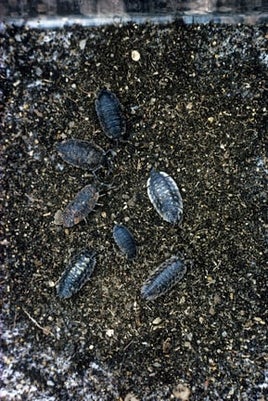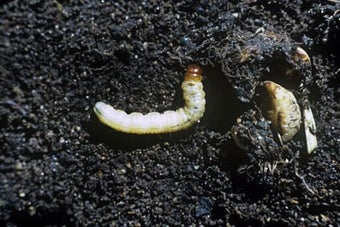
Quick facts
Common name - Woodlice
Scientific names - Various species, including Armadillidium, Oniscus, Philoscia and Porcellio species
Function - Largely feed on decomposing plant material (detritivores) a vital part of nutrient recycling
Timing - All year
What are woodlice?
Woodlice are terrestrial crustaceans belonging to the order Isopoda, there are 30 species in Britain five of which are often found in garden. They shelter in dark damp places, especially where there are accumulations of decaying plant material. They feed on this material and are an important part of nutrient recycling in a healthy garden ecosystem.
Function in the garden
Woodlice feed largely on damp decomposing plant material and are therefore part of the that helps nutrient recycling in the garden.
Woodlice do not usually damage healthy plants, they can however become associated with damage which has other causes such as slug damage or plants that have died and begun to rot. Woodlice occasionally damage very soft plant tissues, such as and sometimes strawberry fruits.
Holes in older, tougher, plant material will have been caused by something else, such as slugs or caterpillars.
Management
- Woodlice are a vital part of garden and should be encouraged in a healthy garden
- Woodlice rarely damage healthy plants and are useful recyclers of decomposing vegetable matter
- They are naturally abundant in a healthy garden
- Woodlice can come into houses from gardens but are unlikely to survive for long indoors unless they can find a damp place to shelter
- Woodlice are food for many other creatures such as shrews, toads, centipedes, some spiders, ground beetles and parasitoid flies
Biology
During the day, woodlice hide in dark damp places so they are often found under logs, stones and flower pots. At night they move around in search of food, which is mainly rotting plant material.
There are several species of woodlice commonly found in gardens. They are up to 1 cm (½ in) long and are often grey in colour, with body segments sometimes flecked with yellow or pinkish brown markings. Some species, known as pillbugs, can roll themselves into a ball when threatened.
Woodlice produce eggs in spring and these are retained inside the female’s body until they hatch. The newly hatched woodlice, known as mancas, are kept in a brood pouch on the underside of the female for a few days before they disperse. The mancas are similar in appearance to the adults and they shed their outer shells on a number of occasions as they grow bigger. They become adults by late summer and overwinter before reproducing in their second year.
More information on woodlice can be found from the British Myriapod and Isopod Group.






